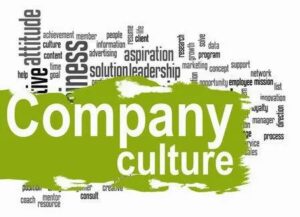
There is a current raging debate about what “organizational culture” encompasses. Some say it’s the stories we tell ourselves about the organization for which we work. Some say it is entirely top down driven – it’s the way that the CEO works and pushes everyone else to work. Maybe it’s how we treat each other – or our customers. Regardless of what’s in it, every organization has their own unique organizational culture – usually made up of a combination of underlying beliefs, assumptions, values and ways of interacting that contribute to the unique environment of an organization. It dictates the way that managers and employees act with each other and how they operate with customers. It defines – and often dictates – your organizational effectiveness.
Over the last several years, there’s been a drastic increase in organizations paying attention to culture. A 2015 Deloitte University Press study revealed that 87% of the organizations surveyed say that culture and employee engagement is their top challenge. More recently, the news media has been full of stories about the US reaching “full employment:” Wall Street Journal May 3, 2019: “Hiring Accelerates and Unemployment Falls” and Market Business News May 5, 2019 headlines “US unemployment rate dropped to 49-year low of 3.6% in April” to name two.
For more than a year, headlines have covered the growing labor shortages in the US: CNBC July 5 2018 “The U.S. labor shortage is reaching a critical point,” VOX March 18 2019 “The US is experiencing a widespread worker shortage.” The point of these articles: the US economy doesn’t have enough workers. For the first time in more than 200 years – since the start of the Industrial Revolution – we have more jobs than people to fill them.
With the rise of the Millennial (born 1981 – 1996) and Gen Z (1997 onward) employees who demand workplaces that are engaging and work that is meaningful, companies and organizations are finding it increasingly difficult to attract – and retain – the best employees. The average tenure of a millennial employee is still just 18 months. A key driver of this: they are unwilling to ensure toxic workplaces, cultures and managers.
To compete in this current landscape, employers must get a handle on their management culture and how employees are treated. Most managers became managers because they were really good at their jobs – or even more challenging, just because of tenure. As a result, most managers have never been trained in how to manage employees and how to get the best from their teams. We have a huge opportunity to engage and train current – and future – managers! If we fail to do so, we are likely to suffer the costs of decreasing employee morale, increased turnover, customer dissatisfaction and defection, brand erosion, and inability to recruit. What is company culture to you? To become an employer of choice in the increasingly competitive landscape, we get to create organizational cultures – however we decide to define them – where employees thrive and top and bottom lines prosper.
Janine Hamner Holman is the CEO of J&J Consulting Group. She has more than 30 years’ experience in organizational development and change management built through working with both Fortune 200 companies and national nonprofit organizations. She spent 10 years studying brain science and developed curriculum to help great organizations create thriving workplaces with engaged, high-performing teams, led by dynamic leaders with whom everyone wants to work. She is especially focused on assisting organizations to become an employer of choice to attract and retain superior talent in the coming era of increased labor competition.






